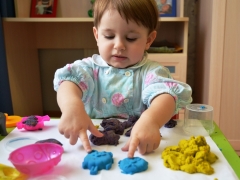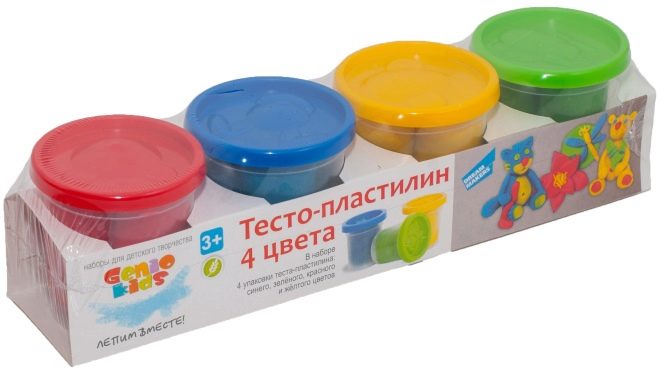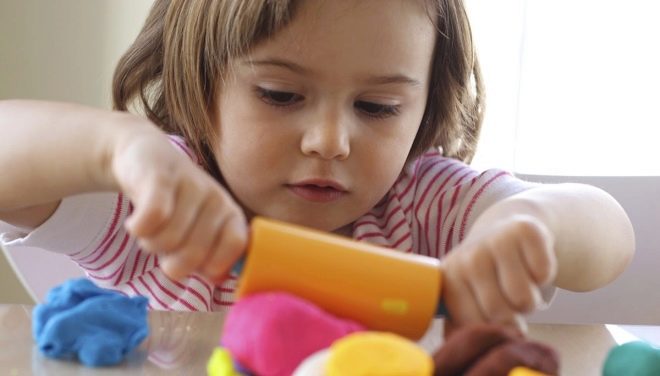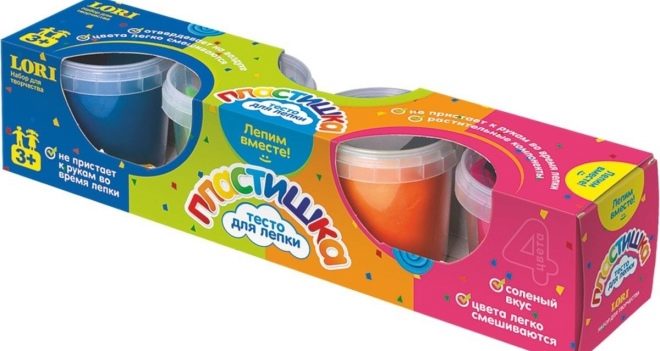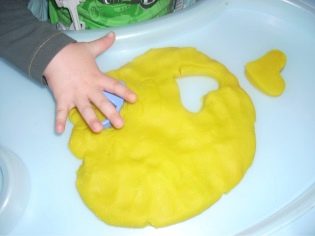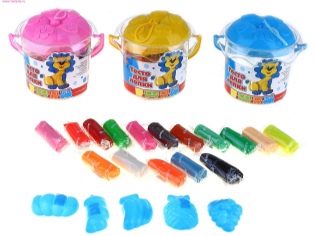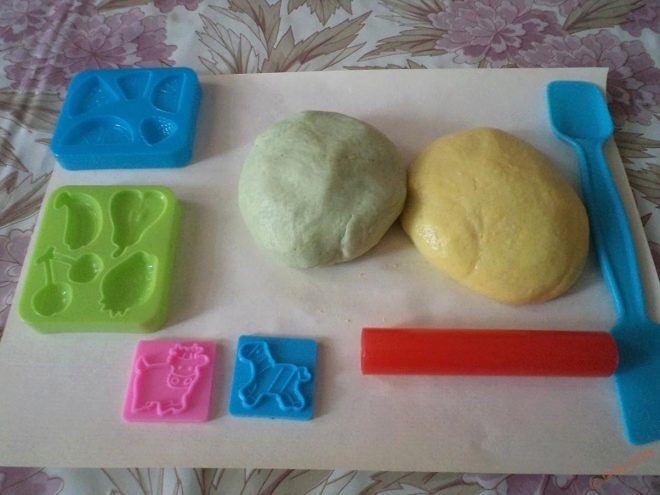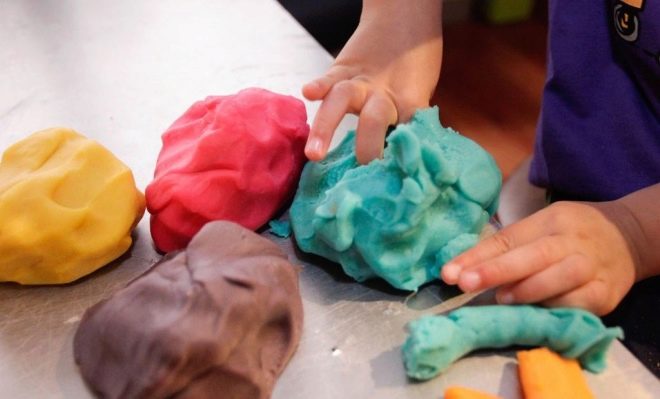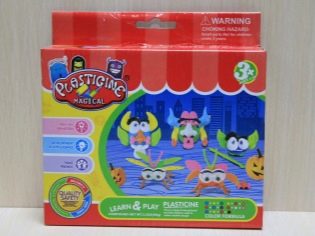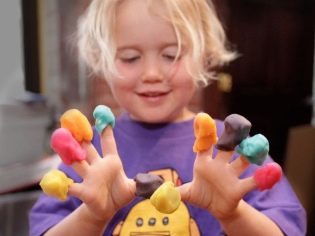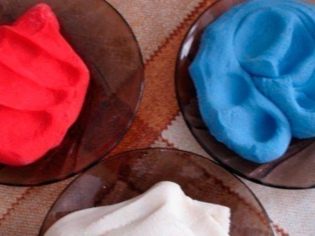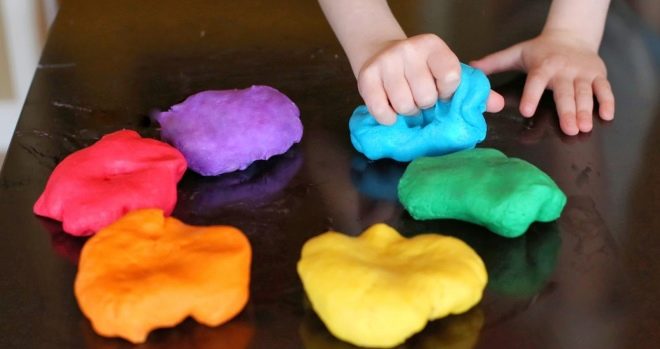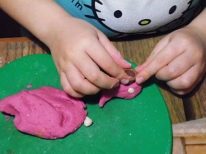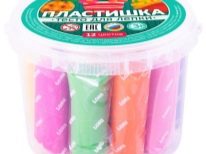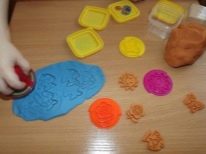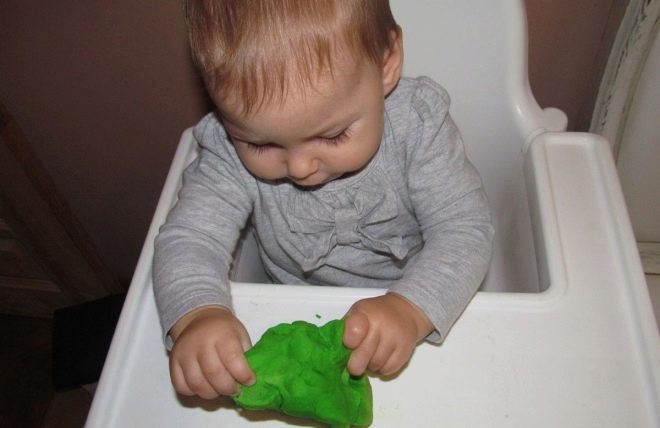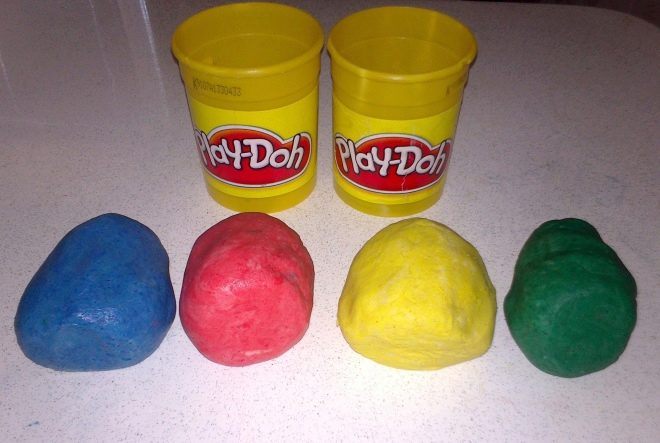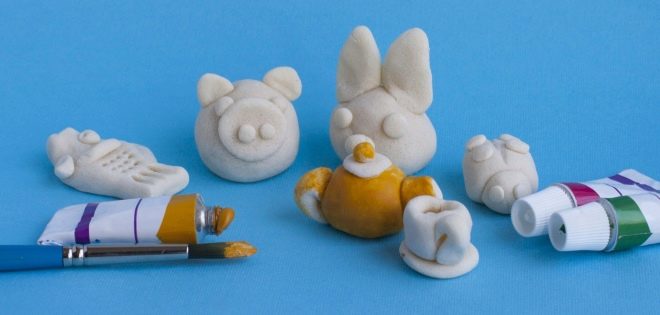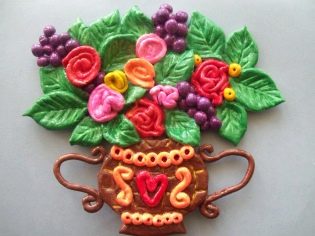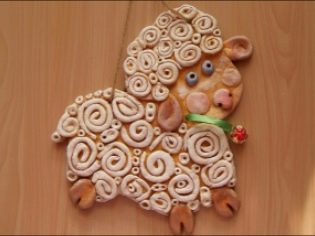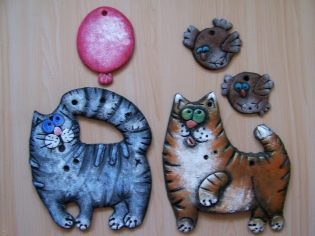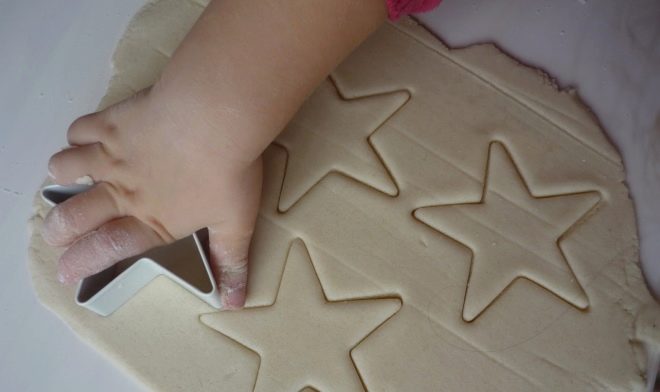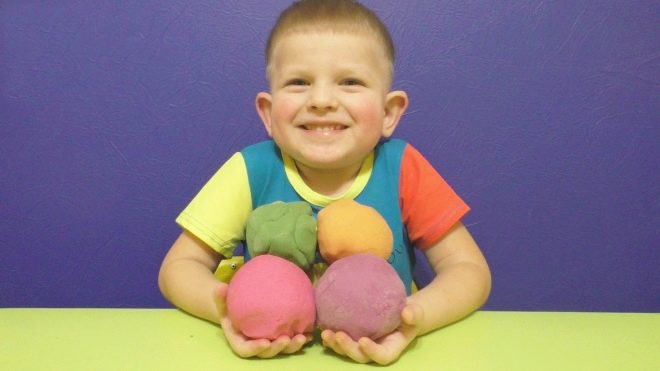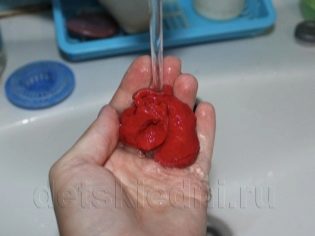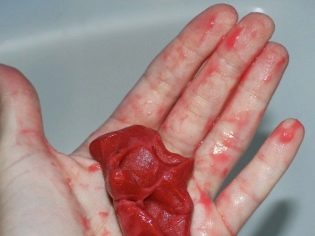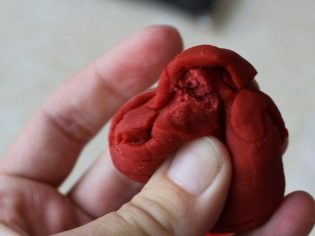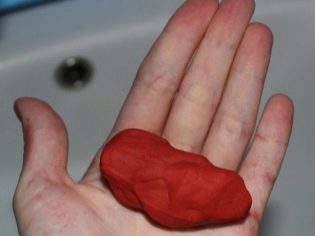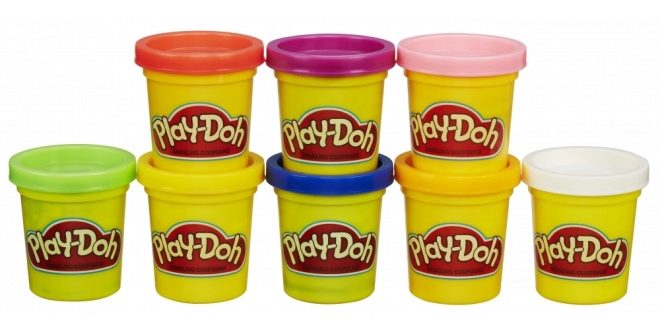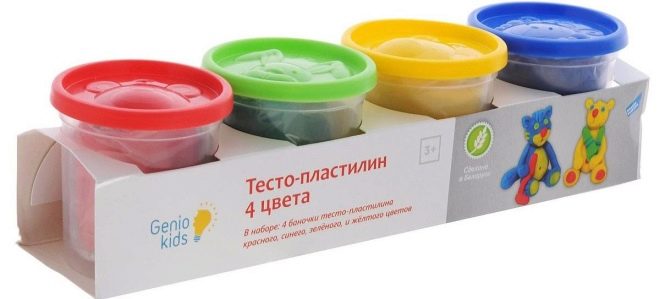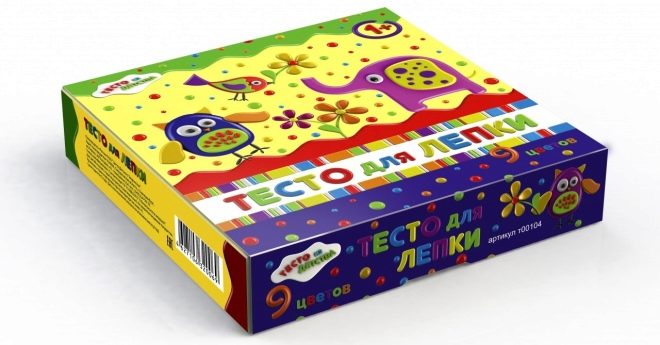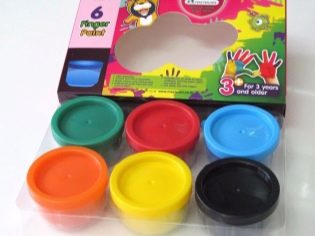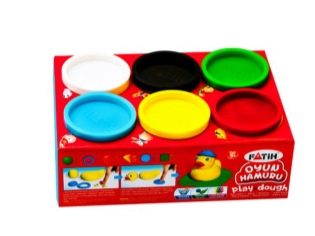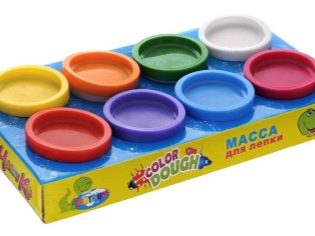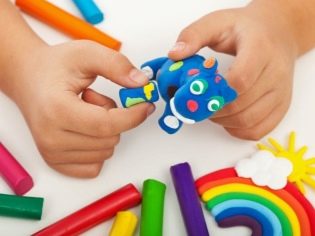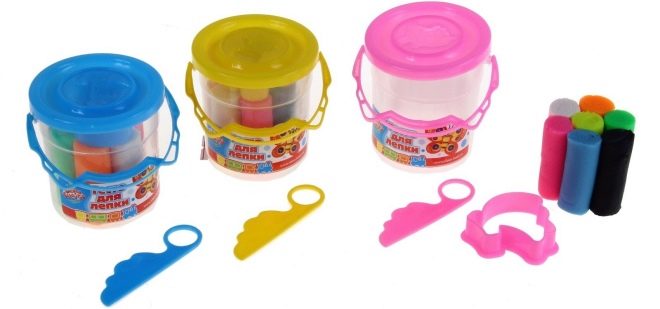Dough for sculpting
Plasticine is an excellent developing material for children's creativity, but without exception, parents at least once thought about how impractical, and even dangerous, it can be for very young children. His toxicity and the ability to get a lump in the throat of a baby, if he tries to eat a lot of food, suggests that this material is completely unsuitable for those kids who have not yet understood that not everything can be put in his mouth. The creators of children's mixtures for modeling also thought about this problem, so they decided to use a modern approach to get out of the situation, inventing a special dough for modeling.
What is different from plasticine?
Dough for modeling is often called a kind of clay, but this is done either out of ignorance or simply for greater convenience of classification. Such a mass is radically different from plasticine in composition, and does not so much resemble it, even in its method of application. For those parents who do not really understand the difference, let us highlight the main differences between the two materials.
Security
Unlike plasticine, modeling dough is completely safe for the child.
The composition of the first mixture, theoretically, can contain anything, including harmful chemicals - so dangerous that in the worst examples, even simple skin contact can cause allergies.
Even if the manufacturer makes every effort to make its product exclusively from harmless products, the very density and viscosity of the clay will be dangerous for the baby, because such a lump in the throat will block the airways.
As for the dough for modeling, it is 100% safe, since its name is not a metaphor, but rather conveys the composition as precisely as possible, except that the stucco version is tinted and strengthened with binders - also safe. It is logical that the dough can even be eaten, but the creators still believe that it is better to eat something else, so they made their product very salty.
Density
The dough is much softer than plasticine, and does not require any special physical effort for modeling. Plasticine is often characterized by considerable hardness, and, in a sense, this is its plus, but before work it is necessary to knead it for a long time in the hands, and for very young children such a task can be daunting at all. Even if the kid can do it, but under the condition of serious efforts, it is possible that such preliminary preparation will discourage him from any desire to do the actual molding. Quite different is the case with the dough - it does not need to be prepared, it is molded immediately, even by the smallest and weakest hands.
Stickiness
The dough is not molded as well as clay. This fact is a clear advantage in favor of the latter, if the goal is formulated as modeling complex handicrafts, which must hold out for a considerable amount of time without losing their form. At the same time, plasticine is molded not only to itself, but also to clothing or furniture, and such contamination is difficult to remove. Another thing is the dough: even if the child gets dirty, an ordinary washing of clothes should give the expected result. Too complicated and durable construction of it, however, can not be molded, but it is not intended for this - it is more a simulator of general fine motor skills, designed for rolling balls and sausages.
Reusability
Here the advantage is clearly on the side of clay - you can easily crumple crafts from it, and try to fashion something else. On the contrary, if the product is successful, you can save it for a long time, carefully protecting it from heat. Unfortunately, the dough does not possess such properties - it freezes in the open air within a few hours (no more than a day), and it does not matter if the kid managed to make something interesting out of it, or not; for this reason, after each use, the mixture must be urgently hidden in hermetic jars, in which it is sold. However, even such a precautionary measure will not save the mass, since it is still sometimes available, at least for a short time, so that it usually loses elasticity within a month. In addition, even finished and hardened products from it are not very durable, and are able to crumble over time; their “repair”, as in the case of plasticine products, is impossible.
In other words, all the characteristics indicate that the dough is the best gift for the creativity of a child under 4 years old, because it is made safe to level the child’s curiosity. As for the inability to create something serious and durable out of it, this is not a problem, because at this stage children are not yet able to create masterpieces.
Kinds
Although it is hard for unknowing people to imagine how elementary things like the dough intended for modeling can be classified, manufacturers carefully thought out a whole range of such goods. In particular, mixtures of this type are classified by composition and density:
- Jelly or silk dough. This variety is the softest of all, since it includes real jelly. Of course, this ingredient in the bucket is relatively small, so this substance is no more edible than all other species, but it is optimally suited for riding primitive forms at an early age;
- Elastic dough. Perhaps the most common option is that it is prepared at home by those mothers who believe that there is no need to buy something that can be done independently. It is already a little thicker, but it is still molded very easily, and the form holds much better than the previous version. A curious fact: the salt here is only half as much as the main ingredient - flour;
- Hard dough. Naturally, it is also plastic, but it requires some effort to work, in view of the higher density (due to an even higher percentage of salt in the composition). Because of its properties, this material is recommended for use by children who have already reached the age of 3 years, but then, in terms of the ability to keep the shape, it already remotely resembles the soft types of ordinary clay.
Manufacturers understand that not even other enterprises can make a huge competition to them, but mothers themselves, who are capable of making analogs at home, therefore they are striving to make their products as interesting as possible - one that you cannot reproduce with your own hands. To do this, they create special kits with molds and tools for modeling, which allows the child not only to roll abstract sausages, but with one movement to create something like a volume medal with a complex image or a relatively simple figure. Such kits have a clear link to a specific topic that is interesting for modern children. Game sets for girls and boys are different: the first prevails on the theme of princesses and fairies, the second, of course, closer to the various heroic characters.
Colors
In order to further interest children in the modeling process, manufacturers often produce multi-colored dough. Coloring is carried out by strictly natural dyes, unable to harm a person, otherwise the whole meaning of the dough for modeling is lost.However, in some cases, you can find on the shelves and an ordinary white mixture - in this case, the creators expect that the parents themselves will paint the mass in the color that they see fit, or even in several colors.
At the same time, the available color range for modeling dough is somewhat inferior to that of plasticine. Sometimes such a substance is not even sold in sets, parents have to choose the desired shades from the available range and separately purchase each jar. This approach is caused by the fact that the color dough, due to its low density, mixes very easily, and as a result it is difficult to make a two-color figure from it - it is more likely that the dyes will mix, and the baby will get just a mush of obscure shade.
What can blind?
To be honest, softer types of dough for modeling are normally suitable only for horizontal creativity, when you get an incomplete three-dimensional figure, but rather its silhouette, lying on a table and losing its shape when you try to lift it vertically. For full-fledged modeling of complex shapes, it is better to use solid dough, but even here you shouldn’t particularly count on the amazing strength and durability of the product. As for soft varieties, it is generally better to buy them immediately with the molds - then even the smallest and most inept kid will get at least a primitive toy, which is better than ordinary balls and sausages.
In the presence of solid dough, fantasy can be somewhat extended, but remember that complex details will still have to be abandoned. On the Internet, you can find photos of real masterpieces created from dough, but they were created not by kids 3-4 years old, but adults, and even then not any, but professionals from the world of art. Of course, parents are not forbidden to help the child in the process of creating figures, but the main goal of the test is not to create a masterpiece, but to develop fine motor skills, so the child should do the main work himself, even if the end result is not particularly impressive. So that the little one is not disappointed to the depths of his soul, try to select subjects for modeling in such a way that their realization would not be a task of enormous complexity - the best thing is that the finished sculpture is a combination of slightly improved balls and sausages.
As for the plots that are widespread and popular among children, animals are leading, for example, a puppy or a calf. Theoretically, it is possible to blind a little man in the same way, but in an era when dolls and other toys most closely resemble favorite cartoon characters, the child is unlikely to admire the resulting abstraction, which even just a person will surely resemble rather remotely. You can entrust the entire creative process to the child to learn, but this is a more suitable option only if the child shows a remarkable interest in the activity.
If you want a relatively indifferent kid to become interested in modeling, you will have to show him that she is able to give an attractive result, which means that it will not do without the help of adults. It is best to agree in advance with the small one that he will do what he does best - balls and sausages, and you will already assemble a finished toy out of them, and also make more complex parts if the project is still quite complex.
The boy will probably also be interested in the idea to make a boat with his own hands. In principle, due to the absence of practically any details, the result will be not a ship, but something like a boat - such a task can be trusted and independent implementation, since there is nothing complicated in it. At the same time, do not forget that if you can still play fully together with animals that are stuck together, the boat cannot be used on water at once, and for two reasons at once: it hardly has a properly distributed weight, so as not to roll over, and the dough for modeling comes from water. worthlessness
What to do if the mass dried up?
The dough for modeling, not securely closed in a jar, can dry out in just a few hours. However, even with careful handling of storage, on average in a month it begins to noticeably lose elasticity, crack when trying to give it a complex shape, and hardened products from it begin to crumble, including under their own weight. In this regard, many parents are wondering how to restore the functionality of the substance.
The absolute majority of varieties of dough for modeling does not imply any recovery after drying - the exceptions are only the best samples. Organic substances, unlike inorganic substances, usually do not allow returning to their previous state - for example, you can get water out of frozen ice again, but you can’t make a raw egg back from scrambled eggs, and you can’t make a wet dough out of dried dough.
Some manufacturers still provided for this possibility, but only under one condition - if the dough is not completely dried, and inside remains soft. If the mixture is ordinary, the water will wash out dyes and adhesives from it, resulting in an obscure jelly, which now does not stick together at all. The best samples contain such binders that are not washed out with water, so you can try to restore them. To do this, hold the mass under running water (but do not immerse it in a bowl of water), and when you see that it has softened, carefully squeeze and roll your palm so that it absorbs all the water. In this case, the loss of a certain part of the dye is guaranteed, and this is not a disaster; much worse, if after the procedure described, the mixture begins to stick to the hands - this means that the product is of poor quality, it will not be possible to restore it.
But trying to soak the finished hardened figure in order to further transform it into something else is stupid, even if the best raw material was used to make it. The old product will be hopelessly flawed, but the new one will not work instead.
Manufacturers
The choice of the test depends not only on the cost and appearance of the package, but also on the verified name of the brand, because this is the only way to be sure of the safety and durability of the purchased product. In this regard, it is worth to highlight several brands that in our country have received quite a lot of fame:
- Play-Doh from the famous company Hasbro. This is perhaps the standard - the famous American company, which released many toys loved by children around the world, could not circumvent this type of children's products, using its own approach to maximally meeting the needs of babies in the process of creating. The sets of this brand managed to become a common name thanks to the guaranteed ecological composition of the mass and very interesting additions in the form of molds that make the game much more exciting. At the same time, because of its import nature, such a mixture is not sold everywhere, well, but because of its cost, it is capable of scaring off a significant portion of potential buyers. However, the highest quality is worth it;
- Genio Kids. A very serious player in the Eastern European market of children's goods for creativity is this brand, whose products are mainly produced in Belarus, but are exported to at least Russia, Ukraine, Kazakhstan, Poland, the Czech Republic, Lithuania and Moldova! In terms of its operational characteristics, this product is ahead of very many competitors, and there is no doubt about the naturalness of its origin, because the neighboring country is famous for the naturalness of its products. For the price, Genio Kids will be much cheaper than its American competitor, but even if it is inferior in quality, it is only slightly;
- Dough from childhood. Among Russian manufacturers, the products of the plant located in Yekaterinburg are most popular and they decide to influence consumer demand by reminding them of the times when the dough for modeling was not purchased at the store, but was made by mother manually. With this, the manufacturer has once again emphasized that in every way he avoids using any harmful, or even just synthetic, substances in his products. A characteristic feature of the company is that a significant part of its products are not produced in sets, but in particular individual test jars of different colors, which are sold individually;
- Chinese brands. Today, there is no such variety of goods that would not be produced in China and not exported from there to dozens of countries around the world, so even such a primitive thing as a modeling dough can be made there and sold here. It is not necessary to state a priori that such products are of low quality - often the reviews about them are very positive, but here you should pay attention to one very important point: Chinese manufacturers like to fake popular brands from other countries, and to forge a competitor's product from their own country for them - no problem at all. Even if you are sure that this brand is checked and does not have the slightest complaint on your part, be prepared to carefully examine the packaging and find fault with any typographical errors that may become evidence of counterfeiting. At the moment when you are not sure of the authenticity of production by the very firm that is indicated on the packaging, you can no longer believe the composition indicated.
How to choose for creativity for children?
First and foremost, build on who you buy dough for and why. For the smallest, it is better to choose more flexible options, because then the child will not need serious physical effort, but the impossibility of keeping the shape is not fundamental at the moment - such a pussy is unlikely to create a masterpiece. For a child from 3 years old, get a solid dough - at this stage it will become transitional to real clay.
If the child still does not know how to sculpt, and you set a goal to interest the child, be sure to purchase a complete set with the maximum number of molds, tools, instructions and other nice bonuses. Children never delay attention on what they don’t like, so you need to provoke love at first sight.
Finally, do not be lazy to read the composition on the packaging - it is desirable that there is nothing suspicious. In the same place, find references to compliance with quality standards - an unscrupulous manufacturer is embarrassed to post such things so that they will not be sued. By the way, the dough for modeling also has an expiration date, so this parameter is also required to specify.
How to make a dough for sculpting with your own hands, see the following video:
